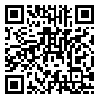BibTeX | RIS | EndNote | Medlars | ProCite | Reference Manager | RefWorks
Send citation to:
URL: http://ioh.iums.ac.ir/article-1-149-en.html
Background and aims
Wastes are defined as a solid, liquid and gas materials that is produced from human activities, as direct or indirect. There is the possibility of linking between different complex of Geographic Information, which have a descriptive and locative relationship, simultaneously. GIS (Geographic Information System) is as a bridge that it can relate resources and management database together. The objective of this study was to investigate the condition of hazardous solid waste of industries in Dashtestan township and specification of volume and type of solid pollutants which probably can bring them in the environment and use of these outcomes for more recognition of establishment position of industries.
Methods
This study was evaluated on 8 industries according to type of products and type of each industry's hazardous solid waste. Then the 1/25000 scale digital topographic map was provided and geographical coordination of each industries was determined by a GPS system. All of the obtained data were transferred to a GIS. Also a designed checklist and the existing standards were applied to determination of the list and the hazardous code of each industry.
Results
The obtained results showed that, 3 industries from 8, don't exactly conformed to the standards and in the sixth industry had susceptibility to be in the P category match to hazardous waste list. All of the eight industries produced 174.5 ton/year of solid waste that 99.1% of them recycled after daily, monthly and seasonal storage.
Conclusion
62.5% of studied industries conformed to Iran protection agency's criteria, but some industries have a little problem in distance index from educational and residential centers. Disposal of wastes in most industries didn't have any problem except in the sixth industries that
needs more investigation by experts and managers.
Received: 2009/09/23 | Published: 2008/10/15
| Rights and permissions | |
 |
This work is licensed under a Creative Commons Attribution-NonCommercial 4.0 International License. |





